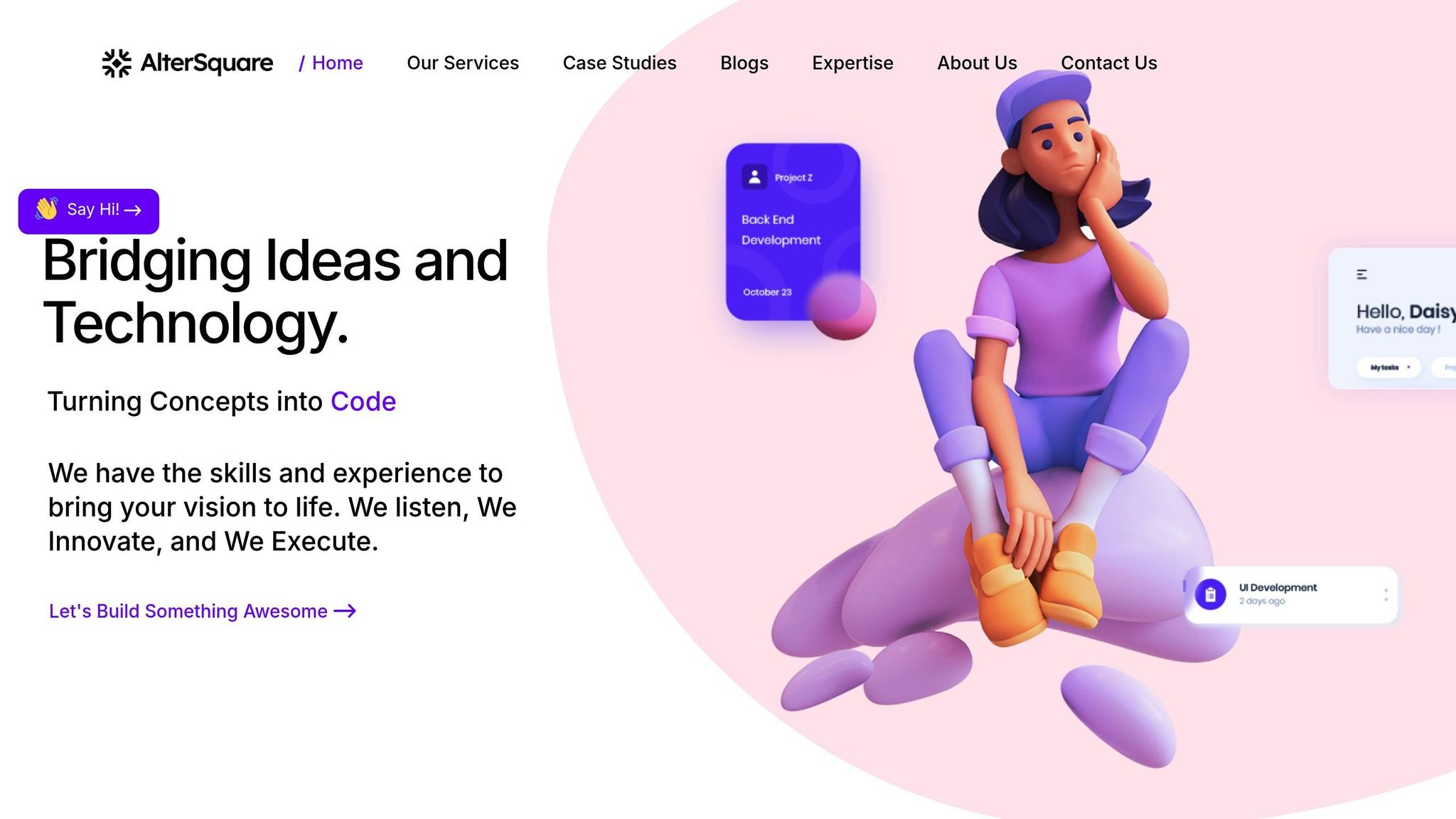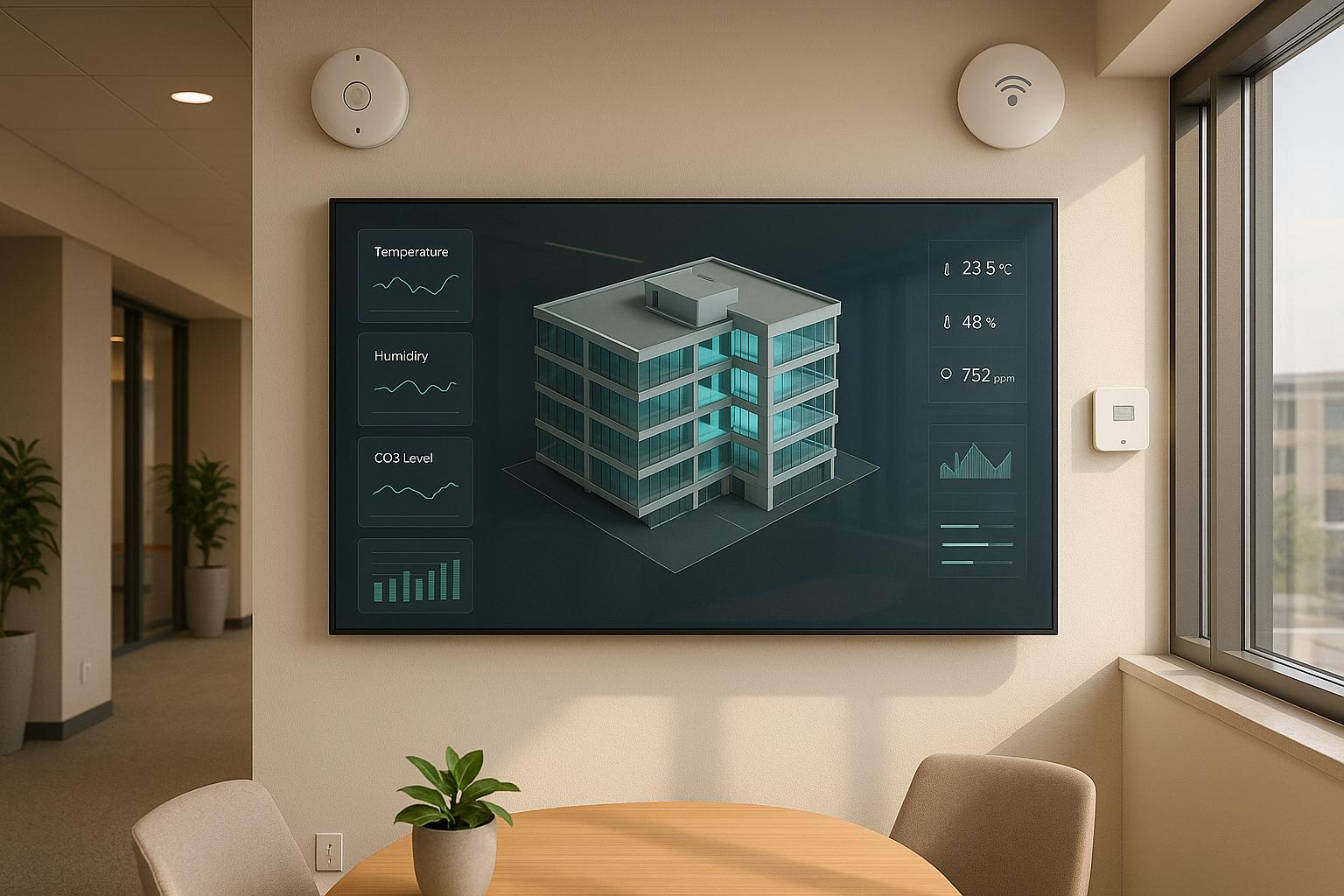How Misaligned Expectations Kill BIM Start-ups – And the Simple Alignment Rituals That Prevent It
Taher Pardawala June 14, 2025
Misaligned expectations can destroy BIM startups. They lead to delays, budget overruns, and failed projects. The good news? You can prevent this with clear communication, realistic goals, and structured alignment practices. Here’s how:
- Why it happens:
- Vague goals and undefined deliverables.
- Poor documentation and communication gaps.
- Underestimating project complexity and costs.
- How to fix it:
- Weekly demo sessions: Keep stakeholders aligned by showcasing real progress.
- OKR sync meetings: Track goals and adjust priorities regularly.
- Quick alignment tools: Use centralized dashboards for real-time issue tracking.
- Key practices:
- Create detailed BIM Execution Plans (BEPs).
- Update documents dynamically to reflect project changes.
- Provide regular progress updates with visual tools.
Startups that follow these steps report faster project delivery, fewer reworks, and better client satisfaction. Alignment isn’t just a strategy – it’s the key to surviving and thriving in the competitive BIM space.
CREATING BIM EXECUTION PLAN (BEP) WITH ALIGNMENT TO ISO 19650 WITH SAMPLE

What Causes Expectation Drift in BIM Startups
When expectations in BIM startups veer off course, the consequences can be both financially and operationally damaging. Research highlights the risks: 62% of outsourced IT projects exceed budgets, and miscommunication accounts for 56% of project failures [1]. For BIM startups, these numbers underscore the critical importance of staying aligned.
Vague Goals and Unclear Deliverables
One of the biggest drivers of expectation drift is starting a project without well-defined objectives. Phrases like "we need better collaboration" or "improve our design process" sound good but lack specificity. This ambiguity often leads to misalignment right from the start.
Undefined BIM Execution Plans (BEPs) are a common source of confusion. Without clear deliverables, timelines, or success metrics, development teams are left guessing what clients actually want, while clients anticipate results that were never explicitly agreed upon.
This is where the SMART framework – Specific, Measurable, Achievable, Relevant, Time-bound – becomes essential. For instance, a SMART goal could be: "reduce clash detection time by 30% within 90 days using automated reporting tools."
Vague objectives also open the door to scope creep, which affects 52% of projects and can add 10–20% to budgets [1]. In BIM startups, scope creep often takes the form of clients asking for additional model details, extra visualization features, or expanded data integration – none of which were part of the original plan.
Poor Documentation and Communication Gaps
Incomplete or missing Product Requirements Documents (PRDs) and Request for Comments (RFCs) often lead to critical gaps in understanding. When these documents are lacking, key decisions go unrecorded, leaving stakeholders to operate on differing assumptions.
In BIM projects, where collaboration is key, communication breakdowns can escalate quickly. Misalignment on data standards, file formats, or workflow processes between architects, engineers, contractors, and software developers can turn small misunderstandings into major delays.
Cultural differences add another layer of complexity, particularly for startups working with distributed teams or international clients. Research shows these differences can result in 40% more revisions to meet client expectations [1]. Poor communication also damages trust, which has a ripple effect: it impacts 45% of employees, drives 66% of clients to competitors, and causes 12% of businesses to lose key team members – a significant blow for startups that rely on strong relationships and team cohesion [1].
Wrong Estimates for Project Complexity and Costs
BIM projects are inherently complex, involving multiple software platforms, intricate data integration, and coordination across various disciplines. Yet stakeholders often underestimate the effort required for a successful outcome.
Take as-built model creation, for example. Clients may assume that converting existing drawings into BIM models is a straightforward process. In reality, it requires extensive field verification, data cleanup, and rigorous quality control. The challenges only increase when dealing with older buildings or incomplete documentation.
Interoperability issues between different BIM software platforms further drive up costs during execution. Combined with underestimating the time and resources required for tasks like data integration or scaling operations, these misjudgments set the stage for expectation drift.
The result? Vague goals leave teams without a clear direction, poor documentation hampers course corrections, and inaccurate estimates create unrealistic timelines. Together, these factors can destabilize projects, making it clear why rigorous alignment practices are essential for BIM startups.
Alignment Rituals That Prevent Expectation Drift
To tackle the misalignment challenges mentioned earlier, BIM startups can implement structured alignment rituals to keep client and development expectations aligned. The success of a BIM startup often hinges on how effectively it maintains this alignment throughout its projects. Here are three key practices that help streamline communication and ensure projects stay on track.
Weekly Demo Sessions
Weekly demo sessions are a powerful way to keep stakeholders engaged, clarify progress, and catch potential misalignments before they escalate. These sessions work best when all key collaborators – architects, engineers, contractors, and development team members – are involved from the start. Whether in-person or virtual, these meetings should focus on reviewing actual progress.
Rather than discussing abstract features, the demos should showcase real functionality. For instance, in a BIM project, you might demonstrate how clash detection operates using real model data or walk through a user interface with sample project files. This hands-on approach creates a feedback loop that minimizes surprises later in the project.
OKR Sync Meetings
OKR (Objectives and Key Results) sync meetings provide a structured way to keep the team focused on critical goals. These regular check-ins, held weekly or bi-weekly, help teams evaluate progress and ensure that strategic objectives remain a priority.
A typical OKR meeting follows a clear agenda that prioritizes outcomes over status updates. Teams might discuss questions like: How confident are we in achieving our objectives? Are our health metrics in a good place? What are the most important tasks for the week? What should we prepare for in the next month? [3]
By visibly tracking OKRs, every team member can see how their work contributes to the larger goals. Encouraging transparency and treating missed metrics as opportunities to learn is especially important in the fast-moving world of BIM. Between these meetings, quick alignment tools can help maintain oversight and momentum.
Quick Alignment Tools
Quick alignment tools offer real-time visibility to prevent small issues from snowballing into major problems. Centralized issue tracking systems allow teams to log, update, and resolve coordination challenges in one structured environment. These tools reduce the risk of miscommunication that often arises from scattered emails or informal chats.
Many platforms include real-time dashboards that serve as central hubs for project issues. These dashboards integrate directly with the modeling environment, providing full context, clear ownership details, and status updates. For example, if a clash is detected in a 3D model, the dashboard reflects the issue along with all the necessary information for resolution.
Shared dashboards ensure critical issues are flagged early. This proactive approach gives teams the chance to reallocate resources, adjust timelines, or escalate concerns while there’s still time to make changes. Clear communication, combined with visible accountability, ensures that problems are identified and resolved efficiently.
sbb-itb-51b9a02
Documentation and Communication Best Practices
Strong documentation and open communication are essential for keeping teams aligned and focused. When everyone operates from the same set of guidelines, it’s easier to concentrate on delivering results rather than clarifying tasks. These practices work hand-in-hand with alignment strategies, ensuring consistency from the planning stages through to execution.
Crafting Effective BIM Execution Plans (BEPs)
A BIM Execution Plan (BEP) is your roadmap for avoiding miscommunication, a common challenge in BIM projects. This document lays out roles, schedules, and data-sharing workflows for the entire project [4].
The most effective BEPs go beyond general advice. They include detailed procedures, such as file naming conventions, software requirements, and a standardized set of annotations, abbreviations, and symbols [5]. Think of it as answering the practical, day-to-day questions: Which software will each team use? What level of detail is expected at different stages? How will data flow between disciplines?
Your BEP should also establish a consistent project reference point, using the architectural model as the baseline to align mechanical, electrical, plumbing (MEP), and structural models [2]. This avoids the headaches caused by teams working from conflicting coordinate systems or reference points.
Additionally, Project Information Plans and Task Information Delivery Plans outline who is responsible for each deliverable, when it’s due, and the protocols they must follow [5]. These plans promote accountability by making roles and responsibilities transparent to everyone involved.
To keep everything on track, your BEP should include realistic timelines, clearly defined roles, and strategies for meeting key deliverables. Incorporate quality control measures, accuracy requirements, and clash detection protocols to ensure technical consistency throughout the project.
Keeping Documents Dynamic and Relevant
In BIM projects, clear documentation is vital to avoid misalignment. However, static documents won’t cut it – your plans must evolve as the project progresses. Regularly update documents like PRDs (Project Requirement Documents) and RFCs (Request for Changes) to reflect shifting needs [6].
Version control and scheduled updates are essential for keeping documentation accurate and traceable [6]. This makes it easy to track what changed, when it changed, and why. Regular updates to models, paired with clear workflows for synchronization, ensure everyone is working with the most current information.
To simplify document management, create a single, well-organized hierarchy for maintaining your files. Align updates with project milestones and critical decision points [6]. Define clear validation steps, assign responsibilities, and set up quality control checks at regular intervals. Automating routine tasks like backups, model synchronization, and system health checks can also save time and reduce manual effort.
Regular Progress Updates
Clear communication is the antidote to expectation gaps that can derail projects. Regular updates – both visual and written – keep stakeholders informed and aligned. The key is to establish predictable communication routines that provide insight into project health without overwhelming the team.
Real-time visualization is a game-changer for understanding project status. As Principal Brian Sauer noted about using BIM tools like Revit:
"Using BIM via Revit means everything can be viewed in real time, as opposed to waiting for weekly meetings or updates from the architect or engineer." [7]
This on-demand access to information eliminates delays and ensures stakeholders stay on the same page.
Establish protocols for documenting and implementing change requests, along with clear communication channels for reviews and approvals [6]. Change is inevitable, but having a structured process ensures everyone knows who needs to approve what – and when. Integrated BIM tools also allow teams to visualize potential conflicts and evaluate their cost implications before they escalate [6].
Teams that succeed often have pre-defined issue creation and management protocols [6]. By integrating these into your workflow, you can maintain smooth communication and address problems early, keeping the project on track at every stage.
How AlterSquare Prevents Misalignment in BIM Startups

AlterSquare tackles the issue of expectation drift by embedding alignment practices into every stage of its development process. Through regular check-ins and meticulous documentation, the company ensures projects stay on track. These practices form the backbone of its I.D.E.A.L Delivery Framework.
Built-in Alignment Through the I.D.E.A.L Delivery Framework
The I.D.E.A.L Delivery Framework is AlterSquare’s structured approach to maintaining alignment during its 90-day development cycle. This framework incorporates weekly demos, OKR sync meetings, and detailed documentation right from the start.
To address the specific challenges of BIM (Building Information Modeling), the framework begins with essential features like core modeling and clash detection. This allows teams to validate design concepts early without being overwhelmed [8]. By focusing on these priorities, AlterSquare minimizes scope creep and ensures stakeholders see consistent progress every week.
For instance, BIM centralizes project data, which helps align stakeholders and reduces the likelihood of change orders [8]. AlterSquare builds on this by organizing work into two-week sprints. Each sprint targets specific goals, such as updating models or conducting clash detection tests, keeping the momentum steady [8]. Teams using this method report an 82% increase in efficiency and 79% fewer coordination issues [8].
Additionally, the framework considers the financial constraints often faced by BIM startups. By leveraging BIM’s potential to reduce project costs by up to 20% [8], AlterSquare helps founders create realistic budgets that account for labor and procurement expenses tied to BIM processes [8].
Different Approaches for Different Founders
AlterSquare understands that founders come from diverse backgrounds, and their needs vary. The company tailors its communication style and level of documentation based on each founder’s technical expertise.
For non-technical founders, AlterSquare provides visual demos and simplified explanations. This approach ensures they can successfully navigate the 90-day MVP (Minimum Viable Product) development process through effective planning and actionable feedback [11].
Technical founders, on the other hand, receive in-depth documentation and direct access to development metrics. While they often grasp the complexities of product development, they may need external resources to speed up their MVP creation. AlterSquare supports them with comprehensive PRDs (Product Requirement Documents) and RFCs (Requests for Comments).
Seasoned founders with prior experience in launching products benefit from streamlined communication. AlterSquare focuses on key decision points and potential roadblocks, offering solutions that are reliable, efficient, and informed by lessons from past BIM projects. This approach helps experienced entrepreneurs avoid pitfalls without feeling bogged down by unnecessary check-ins.
By tailoring its communication and support, AlterSquare ensures non-technical founders aren’t overwhelmed by technical jargon, while experienced founders can focus on strategic decisions without micromanagement. This flexibility paves the way for quicker, more predictable launches.
Faster Launch with Predictable Results
AlterSquare’s integrated methods help BIM startups avoid delays and budget overruns. Through rapid prototyping and cohesive product management, startups achieve a 66% higher project win rate [8] while cutting project durations by up to 7% [8].
The strategy begins with a limited scope, focusing on core BIM functionalities. Features are expanded gradually, guided by user feedback and project results [8]. This approach keeps development costs under control and prevents unnecessary feature additions.
Technologies like Node.js, Vue.js, Nuxt.js, and GoLang form the technical backbone of AlterSquare’s high-performance, data-driven BIM applications [10]. This solid foundation ensures consistent project execution throughout the development cycle [8].
BIM is known to reduce unplanned changes by 40% [9], and AlterSquare’s structured approach ensures these advantages translate into faster, more reliable launches. By embedding alignment practices into every phase of development, AlterSquare helps founders avoid the expectation gaps that often derail promising BIM startups.
Conclusion: Alignment Determines BIM Startup Success
Misaligned expectations are a major pitfall for BIM startups, often leading to miscommunication, delays, and budget overruns. The solution? Alignment. When all stakeholders are on the same page, BIM projects run smoother and deliver better results.
Take, for example, a leading U.S. construction firm that implemented weekly demos and OKR syncs. This approach cut project delays by 25% and boosted client satisfaction by 15% [12]. Another case comes from VIATechnik, which worked on a large healthcare facility in early 2024. Through pre-kickoff meetings with stakeholders, they identified critical requirements that might have been overlooked. This proactive alignment reduced change orders by 20% and ensured smoother project execution [13]. These examples show how proper alignment can directly improve project timelines and client relationships.
Statistics back this up: Projects with well-aligned BIM strategies report up to 30% faster delivery times and a 20% reduction in rework compared to those without clear alignment [12]. Moreover, 61% of contractors using BIM reported better outcomes when alignment practices, such as regular updates and clear documentation, were in place [12].
The key is consistency. Weekly demos, evolving documentation, and early stakeholder involvement – whether it’s field teams, facilities managers, or decision-makers – are essential tools for maintaining alignment.
BIM startups that prioritize these practices not only deliver better results but also build trust and credibility in the industry. In a field where reputation is everything, alignment is more than just a good habit – it’s the cornerstone of long-term success.
FAQs
Why should BIM startups hold weekly demo sessions and OKR sync meetings?
Weekly demo sessions and OKR sync meetings play a key role in ensuring everyone stays aligned. These gatherings encourage open communication and clarity, helping the entire team stay informed about progress and any necessary course corrections.
They also provide an opportunity to address mismatched expectations early, recognize small victories, and maintain focus on collective goals. By consistently reviewing updates and aligning on objectives, startups can boost project efficiency and strengthen teamwork.
What quick alignment tools can BIM startups use to avoid miscommunication and project delays?
BIM startups can boost teamwork and prevent delays by leveraging quick alignment tools such as clash detection, real-time model updates, and AI-powered risk analysis. These tools allow teams to spot issues early, ensure everyone is working with the latest information, and identify potential challenges before they disrupt schedules.
Incorporating these tools into daily processes can cut down on expensive rework, enhance communication, and keep projects on track. Regular use of these solutions promotes stronger team alignment and helps everyone stay focused on achieving project objectives.
Why is a detailed BIM Execution Plan (BEP) essential for keeping projects on track and avoiding scope creep?
A BIM Execution Plan (BEP) plays a key role in keeping everyone on the same page throughout a project. It lays out clear roles, responsibilities, and goals, helping to minimize confusion and avoid unexpected changes to the project scope. By establishing processes for quality control and defining measurable milestones, the BEP ensures changes are handled in an organized way, keeping the project moving forward smoothly.
Having a BEP in place allows teams to tackle potential misalignments early, ensuring that everyone – from developers to clients – is aligned with the same objectives. This approach not only strengthens collaboration but also helps reduce delays and unforeseen expenses, leading to a more seamless and efficient project workflow.








Leave a Reply